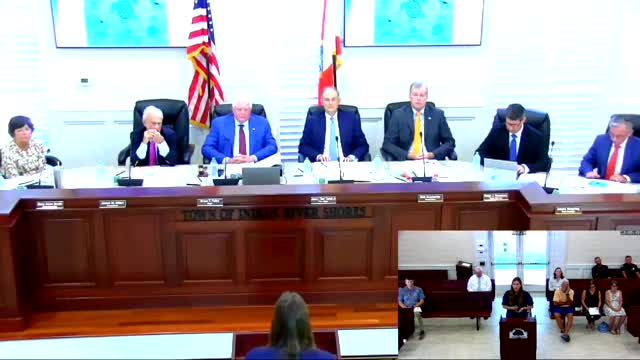Coastal development threatens sea turtles with light pollution
October 25, 2024 | Town of Indian River Shores, Indian River County, Florida
This article was created by AI summarizing key points discussed. AI makes mistakes, so for full details and context, please refer to the video of the full meeting. Please report any errors so we can fix them. Report an error »

In a recent government meeting focused on environmental conservation, officials discussed the significant impact of artificial lighting on sea turtles in Indian River County, Florida. As coastal development increases, so does the prevalence of artificial light, which poses serious threats to the nesting and hatching behaviors of these vulnerable marine animals.
Artificial lighting can disrupt the natural behaviors of sea turtles in three primary ways: it can attract them to dangerous areas, repel them from necessary habitats, or alter their natural patterns, including nesting and reproductive behaviors. Sea turtles, which are highly visual creatures, are particularly drawn to bright white lights, often leading them away from the ocean and into perilous situations, such as roads or swimming pools.
The meeting highlighted alarming statistics regarding disorientation events, where hatchlings fail to find their way to the ocean due to misleading artificial lights. On average, Indian River County experiences around 80 disorientation events annually, but 2022 saw a spike in these occurrences. Officials noted that the increase could be attributed to a lower nesting year, making disorientation events more detectable.
To combat the adverse effects of light pollution, the county has implemented a Habitat Conservation Plan (HCP) that includes several proactive measures. These measures involve sending preseason lighting letters to beachfront property owners, conducting annual lighting surveys to ensure compliance with local ordinances, and documenting disorientation events to monitor the situation effectively.
While the HCP focuses on unincorporated areas of the county, officials acknowledged the need for broader outreach to all municipalities within Indian River County, as they also face similar challenges with artificial lighting. The discussion underscored the importance of collaboration among local agencies and property owners to protect sea turtle populations and ensure their successful nesting and hatching.
As the county prepares for upcoming beach nourishment projects, officials emphasized the need for thorough monitoring and compliance with lighting regulations to mitigate any potential negative impacts on sea turtles. The meeting concluded with a commitment to continue addressing the challenges posed by artificial lighting and to enhance conservation efforts for these endangered species.
Artificial lighting can disrupt the natural behaviors of sea turtles in three primary ways: it can attract them to dangerous areas, repel them from necessary habitats, or alter their natural patterns, including nesting and reproductive behaviors. Sea turtles, which are highly visual creatures, are particularly drawn to bright white lights, often leading them away from the ocean and into perilous situations, such as roads or swimming pools.
The meeting highlighted alarming statistics regarding disorientation events, where hatchlings fail to find their way to the ocean due to misleading artificial lights. On average, Indian River County experiences around 80 disorientation events annually, but 2022 saw a spike in these occurrences. Officials noted that the increase could be attributed to a lower nesting year, making disorientation events more detectable.
To combat the adverse effects of light pollution, the county has implemented a Habitat Conservation Plan (HCP) that includes several proactive measures. These measures involve sending preseason lighting letters to beachfront property owners, conducting annual lighting surveys to ensure compliance with local ordinances, and documenting disorientation events to monitor the situation effectively.
While the HCP focuses on unincorporated areas of the county, officials acknowledged the need for broader outreach to all municipalities within Indian River County, as they also face similar challenges with artificial lighting. The discussion underscored the importance of collaboration among local agencies and property owners to protect sea turtle populations and ensure their successful nesting and hatching.
As the county prepares for upcoming beach nourishment projects, officials emphasized the need for thorough monitoring and compliance with lighting regulations to mitigate any potential negative impacts on sea turtles. The meeting concluded with a commitment to continue addressing the challenges posed by artificial lighting and to enhance conservation efforts for these endangered species.
View full meeting
This article is based on a recent meeting—watch the full video and explore the complete transcript for deeper insights into the discussion.
View full meeting